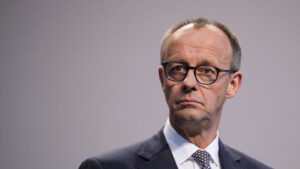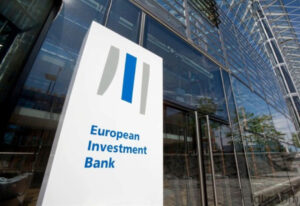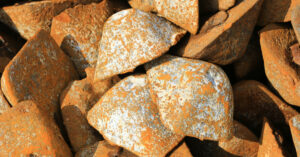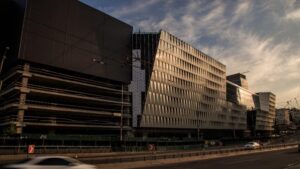
Experts predict coffee prices to rise by up to 40% in 2025. The main reasons cited are drought in Brazil and abnormal rains in Vietnam, the largest coffee-producing countries, according to the FAO and the International Coffee Organization.
In 2024, the price of Arabica rose by 69%, reaching record levels and exceeding $4.30 per pound on the ICE exchange in early 2025. Drought in Brazil led to a 10-11% drop in harvest, causing a shortage, while in Vietnam, the harvest fell by 10-20% due to droughts and heavy rains. The International Coffee Organization warns that market stabilization should not be expected until 2026-2028.
Retail coffee prices are expected to rise by 10-20%, leading to higher prices in cafes and retail packaging. This will increase inflationary pressure, as rising coffee prices complement rising food prices. Experts note that producers will have to invest in drought-resistant varieties and new irrigation systems. There is also an increase in costs in the supply chain, including higher prices for fertilizers, logistics, and credit resources.
According to the FAO, global coffee production in 2023 amounted to about 11 million tons, of which Brazil accounted for 31%, Vietnam for 18%, and Indonesia for about 7%. Global coffee consumption is growing by about 2% annually and is estimated at 177 million bags per year.
According to open data, the leaders in per capita coffee consumption are Finland (about 12-13 kg per year), Norway (about 10 kg), Iceland (9.8 kg), Denmark (8.7 kg), the Netherlands (8.4 kg), Sweden (8.2 kg), Switzerland (7.9 kg), Belgium (6.8 kg), Luxembourg (6.5 kg), and Canada (6.5 kg).
Rising coffee prices in 2025 could pose a serious challenge for both producers and consumers, and will increase interest in sustainable production and expansion of supply in order to stabilize the market in the face of a changing climate.

Supporting Ukraine is in Germany’s interests and in the interests of the common future of the countries, Federal Chancellor Friedrich Merz said as he took part in the Ukraine Recovery Conference in Rome (URC2025).
“We stand firmly on the side of Ukrainians. We also support them in our own interests: for the sake of our common political order of freedom in Europe, freedom of markets, economic growth and our energy security. Germany’s future is closely linked to Ukraine,” Merz wrote on social media platform X on Thursday.

The European Bank for Reconstruction and Development (EBRD), the European Investment Bank (EIB) and the European Commission are launching the Ukraine Facility for Infrastructure Reconstruction (Ukraine FIRST) with EUR 30 million in funding to help prepare public investment projects for the reconstruction of infrastructure in Ukraine.
“The new program will cover the preparation of public investment projects in Ukraine, providing technical assistance, including feasibility studies, environmental assessments, cost estimates, and procurement plans,” the EBRD press release said.
It is noted that in addition to initial financing, additional funds are also planned to be provided by EU countries, in particular the Netherlands and Italy.
The program consists of two components. One, managed by the EBRD, will pool donor contributions and provide grants from international financial institutions to support project preparation.
The second, under the leadership of the EIB, will provide expert advisory services: feasibility studies, technical designs, and procurement plans. They will cooperate with the project preparation department of the Ukrainian government.
The pilot project of the program will be a EUR160 million loan to the state-owned Ukrnafta for the development of distributed generation and the installation of 250 MW of capacity.
Another project will be technical support from the EIB in partnership with the World Bank and, possibly, the EBRD, to prepare investments in the reconstruction and modernization of the M-15 Odessa-Remy highway, according to the statement.
The Ukraine FIRST program was presented by partners at the Ukraine Recovery Conference 2025 (URC) in Rome. It is part of the Framework for Project Preparation initiative developed by the Ukrainian government and international partners last year.

The US continues to occupy a leading position among buyers of Ukrainian recycled pig iron: in the first half of 2025, the US market accounted for more than 77% of foreign exchange earnings from exports of this product.
According to data from the State Customs Service, Ukraine increased its pig iron exports by 47.5% in volume terms in January–June, to 883,200 tons, compared with 598,900 tons in the same period of 2024. In monetary terms, exports grew by 54.6% to $349.4 million.
The main destinations for exports in the first half of the year were:
The US — 77.36% of export revenue;
Italy — 11.96%;
Turkey — 4.91%.
Earlier, on March 12, 2025, the administration of US President Donald Trump imposed 25% tariffs on Ukrainian metal products, with the exception of cast iron. This allowed Ukrainian exporters to maintain their competitive position in the US market and, as statistics show, increase supplies.
At the end of 2024, Ukraine exported 1.29 million tons of processed cast iron worth $500.3 million, of which 72.6% went to the US. Thus, in 2025, the US not only retained its status as a key trading partner in this segment, but also strengthened its importance for the Ukrainian metallurgical sector.

Traders’ confidence that Trump will not follow through on his threats to impose tariffs pushed the London Stock Exchange index to 8,979 points
The FTSE 100 index, which includes the most valuable companies on the London Stock Exchange, rose to a record high as investors shrugged off concerns about Donald Trump’s trade wars.
On Thursday, the FTSE 100 index approached the 9,000 mark, rising to 8,979 points, exceeding its previous record of 8,908 points.
Shares in London rose amid a global rally as traders became confident that Trump would either reach agreements with US trading partners or again delay or cancel the threat of tariffs.
Mining companies led the FTSE 100 gains, with Anglo American, Glencore and Rio Tinto rose by around 3.8%.
Victoria Skolar, head of investment at Interactive Investor, said: “Commodities are driving the FTSE 100 higher, with copper in positive territory and gold rising on a weaker US dollar.”
The FTSE 100 ended the day at a new record high of 8,975 points, up 108.6 points, or 1.23%, on the day.
The blue-chip index has risen more than 9% in 2025, recovering from sharp losses in early April when markets slumped after Trump announced new tariffs as part of his so-called “freedom day,” then rebounded after he delayed their implementation.
Precious metals producer Fresnillo has been the FTSE 100’s top performer this year, with its shares rising 140% since January 1 amid rising gold and silver prices.
Shares in British defense company Babcock have doubled this year, while arms manufacturer BAE Systems’ shares have risen 63% since the start of the year on expectations of increased defense spending amid the ongoing war between Russia and Ukraine.
Shares rose this week despite Trump’s announcement of new import tariffs from August 1, which were postponed from July 9.
Chris Beauchamp, chief market analyst at IG, said investors were in an “euphoric summer mood.”
“Perhaps most notable is the market’s apparent indifference to escalating trade tensions. Trump’s 50% tariff on copper imports and threats against Brazil have elicited a muted response. Many now view such statements as political posturing, which Taco summed up as: Trump always backs down,” he said.
The German DAX index also hit a record high on Thursday. It has risen more than 23% since the start of the year thanks to German Chancellor Friedrich Merz’s plans to increase government spending to stimulate investment and economic growth.
The FTSE 100 is considered an indicator of optimism about the global economy, as many of the largest companies listed in London are globally oriented.
Suzanne Stritter, head of money and markets at Hargreaves Lansdown, said: “The FTSE 100 is full of multinational companies that are sensitive to the outlook for the global economy. With so-called ‘Taco trade’ in full swing, it is benefiting from more optimistic sentiment.”
She added: “Investors expect Trump to ‘back down’ and not follow through on his threats.”

The Ocean Mall in Kyiv is planning to open a branded showroom of De’Longhi, Kenwood, Braun, Nutribullet household appliances and health and beauty products, the company’s press service reports.
According to the press release, the functional location of the new showroom with an area of more than 100 square meters will offer customers a carefully selected range of branded products: coffee machines, kettles, coffee makers, kitchen appliances, blenders, epilators, razors, electronic toothbrushes, etc. It is noted that the showroom format allows you to combine the benefits of online and offline shopping and provide a more personalized service, test selected products, and get exclusive positions. Even more products can be ordered on the company’s branded websites and picked up with free delivery in the store.
This is the third offline store of the chain in the capital: The first one opened in 2017 and became the first showroom-style retail space in Ukraine and Eastern Europe.
Ocean Mall is a retail resort format shopping center. The total area is 300 thousand square meters, with a parking lot for 4 thousand cars. The mall will combine 800 shops and 50 restaurants. Among the largest tenants are Silpo grocery supermarket, flagship stores of the world’s largest retailers in the segments of fashion, sports, and home furnishings. More than 30 thousand square meters in Ocean Mall are dedicated to entertainment, including the Galaxy amusement park for the whole family and a seven-screen multiplex cinema.